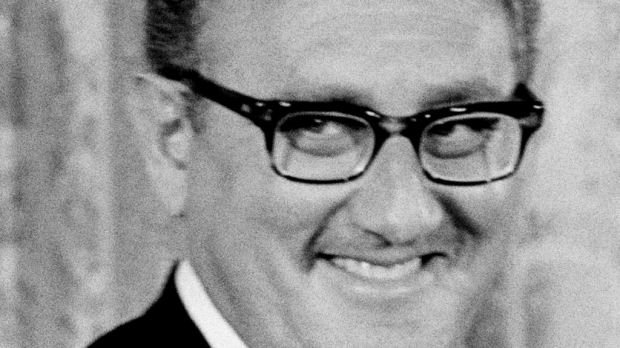Kissinger’s Middle East legacy still felt in Egypt
Former US Secretary of State Henry Kissinger is best known for negotiating an end to the Vietnam war. But he also helped turn Egypt away from the USSR and towards the west.
The public profile of Henry Kissinger, who is 87, is not what it was in the 1970s.
As US National Security Adviser and, subsequently, US Secretary of State, he was the chief architect of US foreign policy under Richard Nixon and Gerald Ford. As such, his name is inextricably linked with the US war in Vietnam and the bombing of Cambodia.
In 1973 Kissinger was the main US negotiator behind the Paris peace accords which formalised an end to the Vietnam conflict. For his efforts, he was awarded the Nobel peace prize in that year alongside Le Duc Tho, his North Vietnamese opposite number at the negotiations.
But his reputation is tainted by claims that he was complicit in the carpet-bombing of Cambodia in the early 1970s, which aimed to deprive North Vietnam of troops and supplies.
His term as National Security Adviser also coincided with Marxist Salvatore Allende’s fateful term as president of Chile, which culminated in a military coup in September 1973 and the installation of General Augusto Pinochet as Allende’s replacement.

Yom Kippur war
Kissinger has a connection to events as they unfolded in Egypt earlier this year. He had just become US Secretary of State when, on 6 October 1973, Egyptian troops crossed the Suez Canal at the start of the Yom Kippur war.
The 1973 conflict was the Arab world’s response to the humiliations suffered by Egypt and Syria at Israel’s hands in the six-day war of 1967. Henry Kissinger became the main player in negotiations to end it.
With a pro-Egypt Soviet Union flexing its muscles in the background, the US Secretary of State’s apparently moderating influence ensured that the UN was able to adopt a durable ceasefire resolution on 25 October. His work as an intermediary between the warring parties gave the world the term “shuttle diplomacy”.
In his book Crisis: The Anatomy of Two Major Foreign Policy Crises, Kissinger reveals that Anwar Sadat, then the Egyptian president, contacted him on the first day of the war, acting behind the backs of Syria, Egypt’s war partner, and the USSR.
In fact, Sadat’s 11 years as Egyptian president saw his country gradually shed its alignment with Moscow, established under President Nasser, and move within the United States’ sphere of influence.
The 1979 Camp David accords and the Israel-Egypt peace treaty, in which Egypt became the first Arab country to officially recognise Israel, are thought to have spurred the resurgence of Islamist fundamentalism in Egypt which resulted in Sadat’s assassination at the hands of Muslim jihadists on 6 October 1981. Sadat was replaced by Hosni Mubarak
Off the political stage
By then Kissinger, who survived Richard Nixon’s 1974 resignation in the face of likely impeachment and went on to serve under President Ford until the end of 1975, had moved off the political stage. He returned in a less senior capacity in the 1980s, serving on the US President’s Foreign Intelligence Advisory Board between 1984 and 1990.
In 1982 Kissinger and Brent Scowcroft (who had succeeded Kissinger as US National Security Adviser in 1975) founded Kissinger Associates, an international consulting firm. Other names connected with KA include Lord Carrington, Lawrence Eagleburger, Paul Bremer and Timothy Geithner.
The official Henry A Kissinger website includes a section entitled Remembrances, in which he reminisces about people he has known. Subjects include Richard Nixon, Italian Fiat magnate Giovanni Agnelli, financier Sir James Goldsmith (father of Conservative MP Zac Goldsmith), Alexander Haig, President Reagan’s first Secretary of State, and zoo owner and gambler John Aspinall,